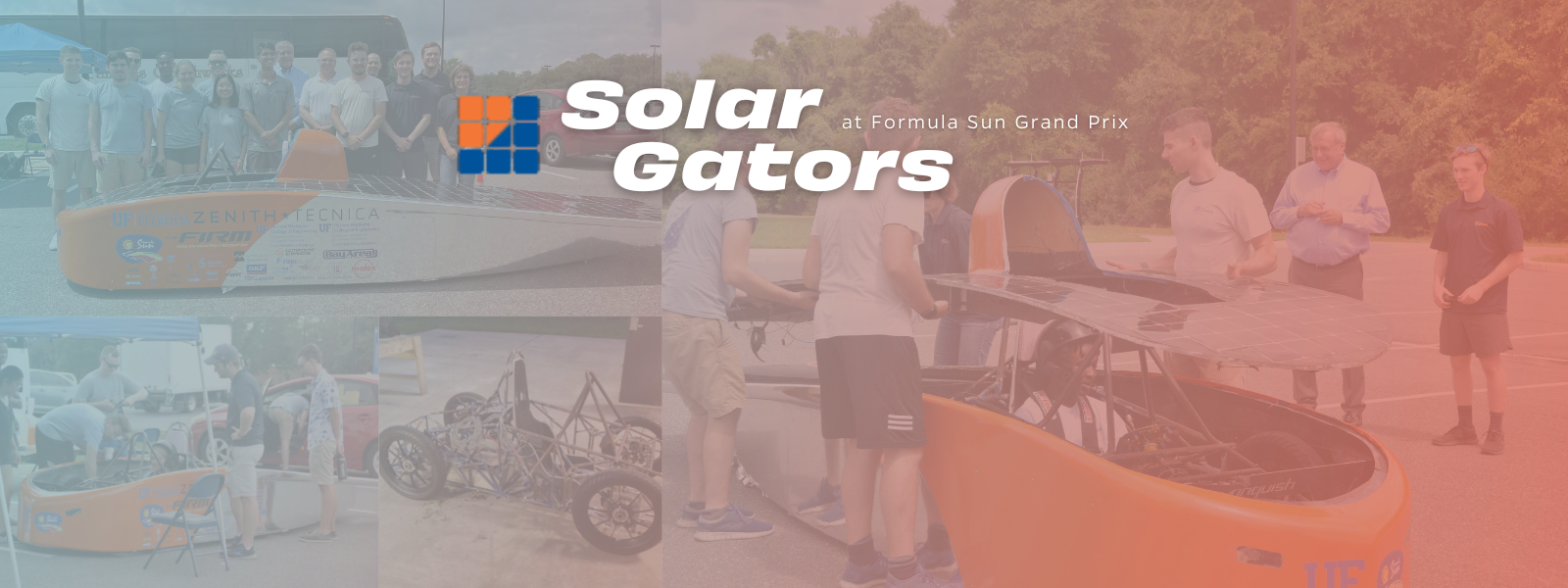During the first week of July, the Solar Gators student engineering team left the swamp to head west and manifest destiny on the wide-open prairies of the heartland. And the challenge that awaited them in Topeka, Kansas, was the Formula Sun Grand Prix.
At the FSGP, teams from universities across North America race solar-powered cars on the 2.5-mile track at the Heartland Motorsports Park. The cars are evaluated based mainly on speed and the number of laps they are able to complete during the 24 total hours of race time (eight hours per day for three days). The race itself is preceded by four days of “scrutineering,” when the cars undergo a series of inspections to ensure they meet the required safety and proficiency standards.
For the race, Solar Gators unleashed their new built-from-scratch car, Sunrider, which they had been developing for the past three years. In its debut, Sunrider logged 75 laps, amounting to 187.5 miles, with the fastest lap clocking in at 3 minutes and 56 seconds. Team president Christian Michaelis described this result as middling in terms of the overall competition, but near the top among teams debuting new cars.
Michaelis emphasized that the experience was thrilling for himself and for the team, a sentiment that was magnified by the fact that Solar Gators hadn’t traveled to the FSGP since 2019.
“This was a huge deal,” he said. “We were really excited to be back and it’s a big milestone for us.”
It was especially exhilarating to watch their vehicle, the fruit of all their arduous labor, finally take to the track.
“That was extremely rewarding for us, to actually get to see the car on the track after all the hard work and late nights everybody’s been putting in,” he said. “Everybody put their blood, sweat, and tears into it, so it’s really rewarding.”
The process of designing and building Sunrider, the third car in the team’s 10-year history, was severely hampered by COVID-19. The pandemic made it temporarily impossible to manufacture the car due to limits on in-person gatherings, and also caused supply chain issues that delayed the acquisition of certain components. They plan to race this car for another two years, but have already started preliminary designs for its successor. Some points of emphasis for the manufacturing of that next car, which they hope to debut in 2025, will be making advances in the aerodynamics and electronics of the vehicle, implementing a lightweight carbon-fiber monocoque structure instead of a heavy space-frame steel chassis, designing a new battery pack, and forgoing off-the-shelf parts in favor of creating their own customized components.
For the coming year, though, they will enjoy having a car and a team that now has some real competitive experience for the first time in three years. Michaelis said that this gives them the opportunity to spend more time on testing, data collection, and fine-tuning rather than having to focus all their efforts on just building the car and figuring out the intricacies of the contest, as they did this past year. The president now looks ahead to the next FSGP with sunny optimism.
“I mean the sky’s the limit, honestly, I think this car can take us pretty far,” he said.
He also expressed the team’s gratitude for the MAE department, which was a platinum sponsor for Sunrider and its predecessor, Cielo.
“We’re extremely grateful for the department’s support, ‘cause they’re really our backbone, and they’re the ones who provide us the resources to get out there and show what Gators engineering is capable of,” he said.
Ben Crosbie
Marketing & Communications Student Assistant
UF Mechanical & Aerospace Engineering
September 8, 2022

